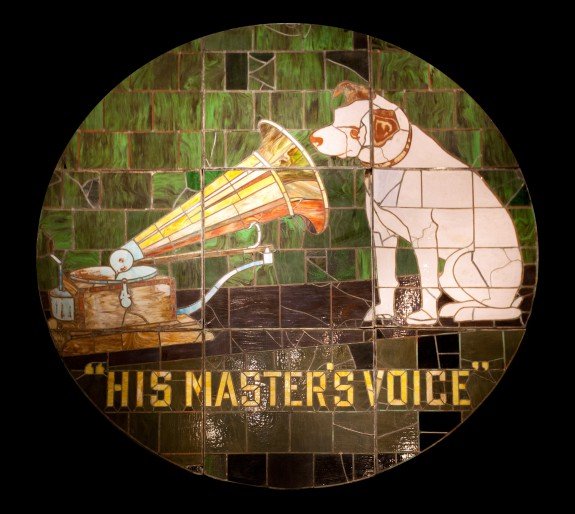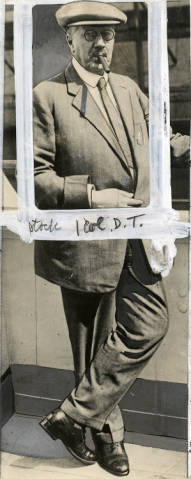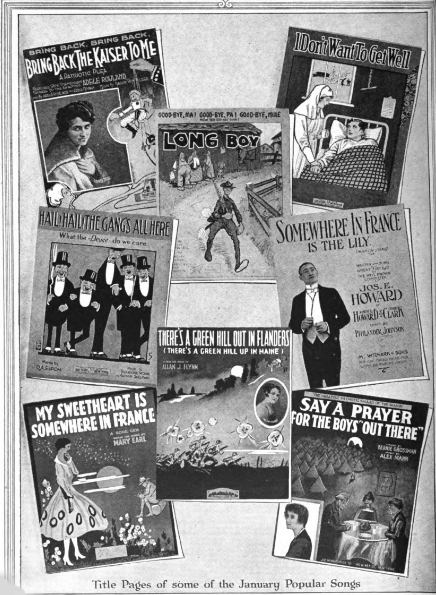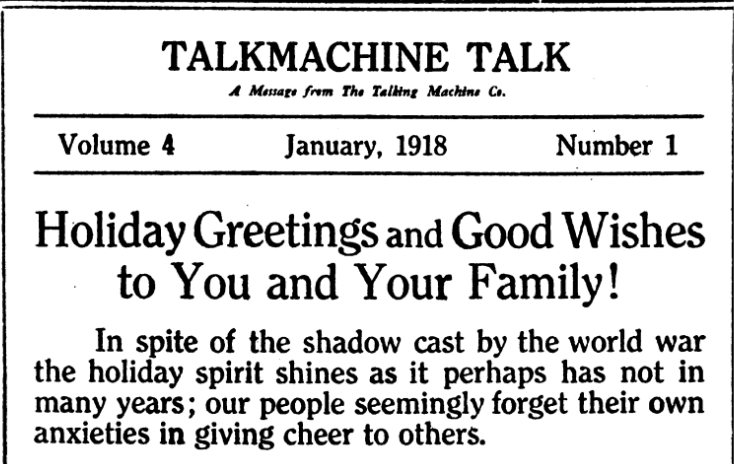Victor Talking Machines
The Victor Talking Machine Company
Today, we’re hopping across the Delaware River to visit the music scene in Camden, NJ, circa 1918. The Greater Philadelphia Region has a record industry history that extends from RCA to American Bandstand to Gamble and Huff, but it all started with Eldridge R. Johnson and The Victor Talking Machine Company.

Johnson achieved massive success via the quality and a diverse offering of musical styles; however, the “His Master’s Voice” ad campaign certainly helped things along. This stained glass window used to be inside one of the Victor factor towers. Courtesy of the Camden Historical Society.

Eldridge R. Johnson in 1926. Courtesy of Special Collections Research Center, Temple University.
Johnson bought the patents for the gramophone from its bankrupt inventor, Emilie Berliner, in 1900. After establishing his newfound business as the Victor Talking Machine Company, Johnson opened a record pressing plant in Camden in 1905 and soon after released the Victrola, the world’s first consumer record player with a built in horn and storage space. Controlling the recording process, the manufacturing of records, and how to play them, Johnson manned the world’s largest record label by 1920.
Victor in 1918
To find out more about Victor’s offerings and the national musical tastes in 1918, I researched their monthly catalogues. In January 1918, during the throws of World War I, songs of glory, war, and returning loved ones dominated the pages of the Victor company holdings .

Victor Records Catalogue, January 1918

An excerpt from the first page of the Victor Records Catalogue, January 1918
By viewing this catalogue, I can see into the record stores of 1918. What kind of music did people listen to at the dawn of the Jazz Era? Well, aside from songs of war, Victrola owners mostly listened to folk songs, operatic arias, groundbreaking orchestral music, and Sousa marches. The January catalogue gives us a glimpse into how the music industry reflected and deliberately responded to the cultural, economic, and political changes happening in the world.
Maybe Victrola owners bought this gorgeous and melancholy Enrico Caruso record for $3 to escape the daily reminders of wars raging overseas:
So, what would you like me to research next: More Victor catalogues? the four Victrola Record store locations in Philly? Other famous recordings done in Camden of Marian Anderson and the Philadelphia Orchestra? The 13,000 men and women working in the factories? Their rival with North Jersey’s Edison Recording Studio? I can keep going!
Sources:
Eldridge R. Johnson, 1926. Special Collections Research Center, Temple University Libraries.
Victor Talking Machine Company. Camden, NJ: Victor Records, January 1918.
Photograph of Nipper Stained Glass. Philadelphia, PA: D’Ascenzo Studios, 1915. Camden County Historical Society.
100% of the SBD rewards from this #explore1918 post will support the Philadelphia History Initiative @phillyhistory. This crypto-experiment conducted by graduate courses at Temple University's Center for Public History and MLA Program, is exploring history and empowering education. Click here to learn more.
What I like are deep authentic glimpses that are not previously known.
But what do YOU want to research next? What cries out to you as a story needing to be told?
I would argue that this is an example of history that people do not know about. Prohibition Era music and history is incredibly popular, but World War I history and music of that time period. Plus, most Victrola history is located at the Camden Country Historical Society--who have NO digitized records available to the public! I think Victrola played a major role in popularizing genres of American music, and I'd love to see the correlation between Victrola record sales and certain artists' success, specifically African American musicians. I want to know what kinds of music different ethnic communities consumed and loved and played.
Interesting! I would vote for those working in the factories, but only because a few of Eva Baen’s relatives worked as painters and carpenters for the Victor Talking Machine. 😊